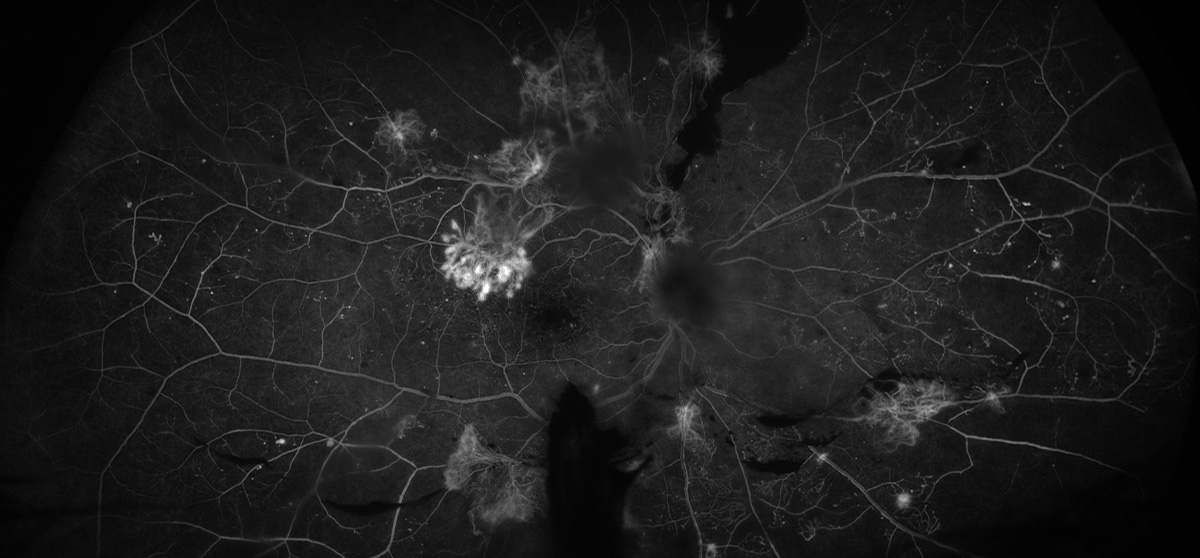 |
| Glycemic control, while always a priority in diabetes patients, is potentially the most critical parameter of the development of diabetic complications in rheumatic disease patients, even under effective anti-inflammatory treatment, this study found. Photo: Rami Aboumourad, OD. Click image to enlarge. |
New data demonstrated that TNF inhibitors have a positive impact on retinal microvasculature and lower the incidence of diabetic retinopathy among rheumatic disease patients with type 2 diabetes.
The study also suggests that glycemic control may be the most critical factor for the development of diabetic complications in rheumatic disease patients, even among those receiving effective anti-inflammatory treatment, according to the investigators.
This cross-sectional analysis, which included 50 diabetic patients with rheumatic diseases (group 1) and an age-, sex-, and HbA1c-matched control cohort (group 2) of diabetic patients, aimed to better understand the impact of anti-TNF (biological) therapies on the incidence and progression of diabetic retinopathy.
Researchers assessed the presence or absence of diabetic retinopathy while also evaluating the following comorbidities as possible confounding factors: hypertension, coronary artery disease and hyperlipidemia.
In each group, 100 eyes of 50 patients was evaluated. Among patients in group 1, data showed that only three had non-proliferative retinopathy. Researchers reported that the median duration of rheumatic disease and diabetes was nine and 11 years, respectively. The mean duration of anti-TNF therapy was four years
When looking at the control group of diabetes-only patients, 13 developed some form newly diagnosed diabetic retinopathy over the last five years. Researchers observed that the calculated retinopathy occurrence between the groups was statistically significant, and they reported an incidence rate ratio for patients receiving anti-TNF treatment 0.4 in this analysis.
“In support of the literature, anti-TNF medication seems to reduce the incidence of diabetic retinopathy independent of its glucose-lowering effect,” the study authors noted in their recent Graefe's Archive for Clinical and Experimental Ophthalmology paper. “Although the outcomes of direct intravitreal administration studies have been controversial, with the increasing and widespread use of anti-TNFs, their anti-inflammatory role in the pathophysiology of diabetes and its complications has become a hot research topic.
“This effect can be attributed to its anti-inflammatory role in diabetes pathogenesis,” they concluded. “Further prospective studies with larger cohorts are necessary to establish the long-term impact of biologics on the development and treatment of DR.”
Baytaroğlu İMU, Baytaroğlu A, Toros MU, et al. Incidence of diabetic retinopathy in anti-tnf treated rheumatic disease patients with type 2 diabetes. Graefes Arch Clin Exp Ophthalmol. June 6, 2024 [Epub ahead of print]. |


